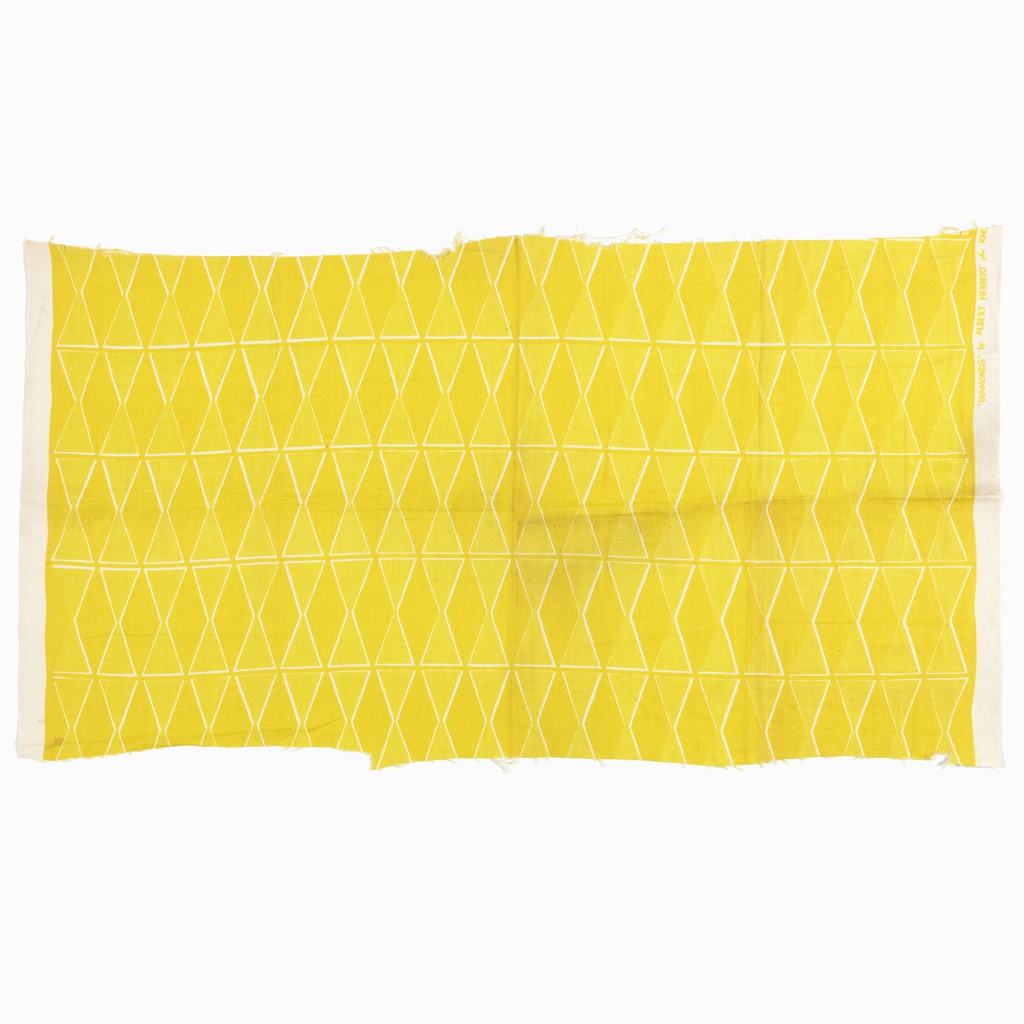There is one other image of this object. See our image rights statement.
See more objects with the color darkkhaki khaki gainsboro or see all the colors for this object.
Object Timeline
|
1951 |
|
|
2011 |
|
|
2013 |
|
|
2015 |
|
|
2024 |
|
Textile, Diamonds
This is a Textile. It was produced by Knoll Textiles. It is dated 1951 and we acquired it in 2011. Its medium is linen? and its technique is screen-printed on plain weave. It is a part of the Textiles department.
Albert Herbert studied industrial design at Pratt Institute and graduated in 1950. Although his first design job in New York with the Knoll Planning Unit lasted only two years (1950–52) he maintained a close relationship with Eszter Haraszty, then director of the Knoll Textiles department. Herbert went on to have a long and productive career as a textile and interior designer. His designs were produced by L. Anton Maix and Arundell Clark before he opened his own firm, Albert Herbert Designs, in 1957.
Diamonds features a positive/negative design of diamonds outlined with an irregular white line that adds a feeling of movement to the static lattice. At the time of proposed acquisition, the museum holds alternate colorways of this design.
It is credited Gift of Richard and Trudy Schultz.
Its dimensions are
H x W: 65.4 x 117.5 cm (25 3/4 x 46 1/4 in.)
It is inscribed
Diamonds by Albert Herbert for Kno (cut off) (printed in selvedge)
Cite this object as
Textile, Diamonds; Produced by Knoll Textiles (United States); USA; linen?; H x W: 65.4 x 117.5 cm (25 3/4 x 46 1/4 in.); Gift of Richard and Trudy Schultz; 2011-25-9
